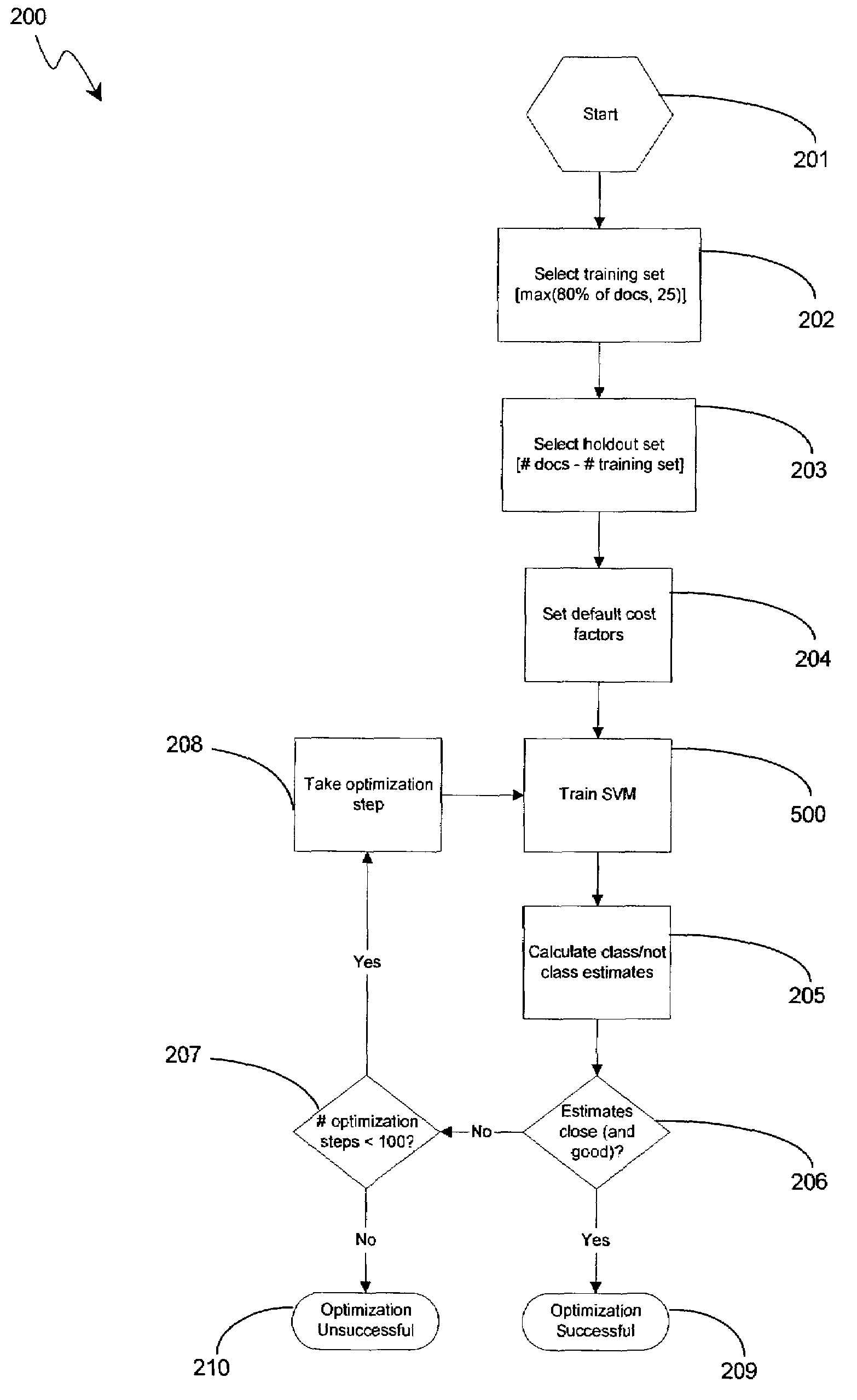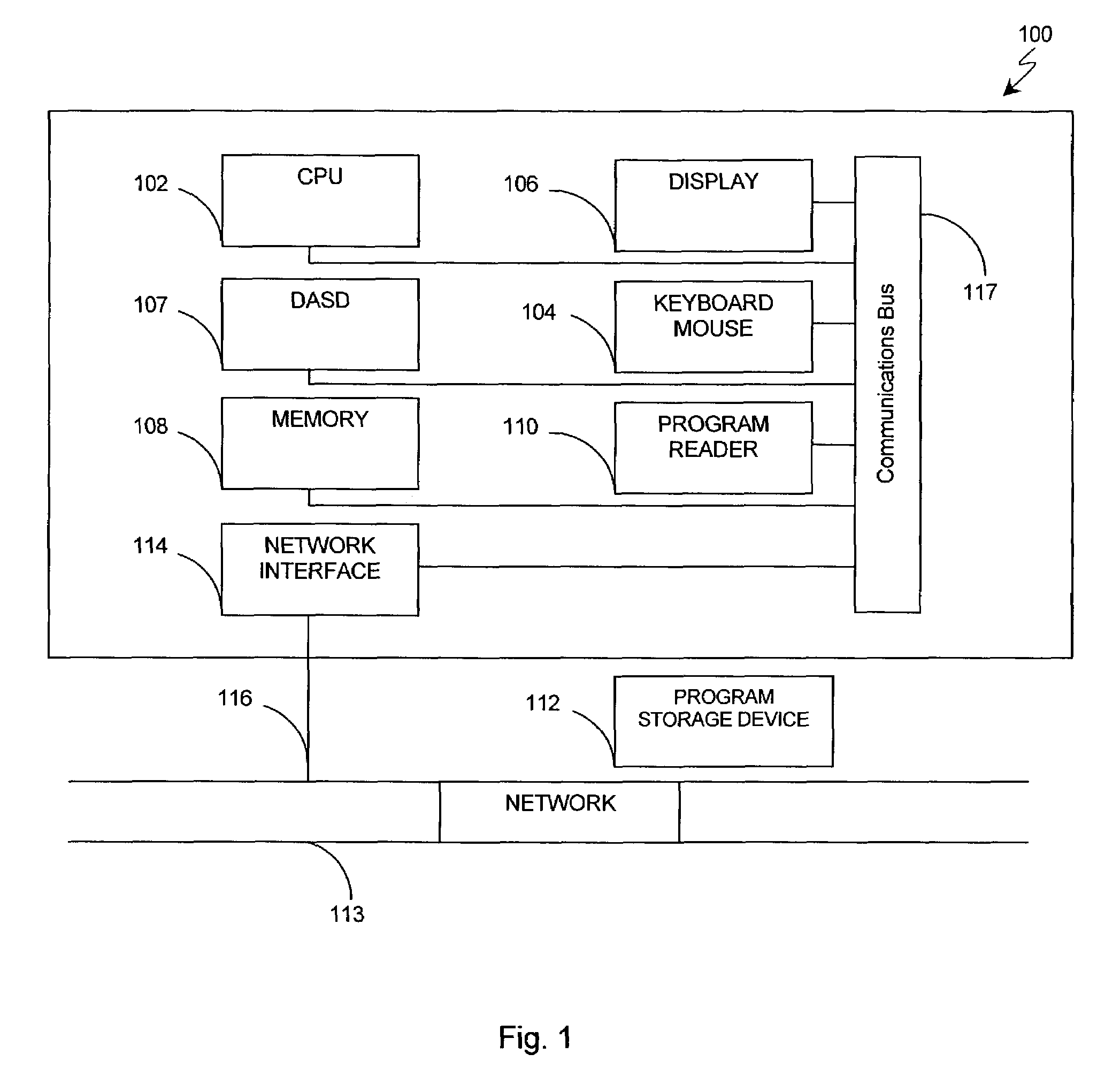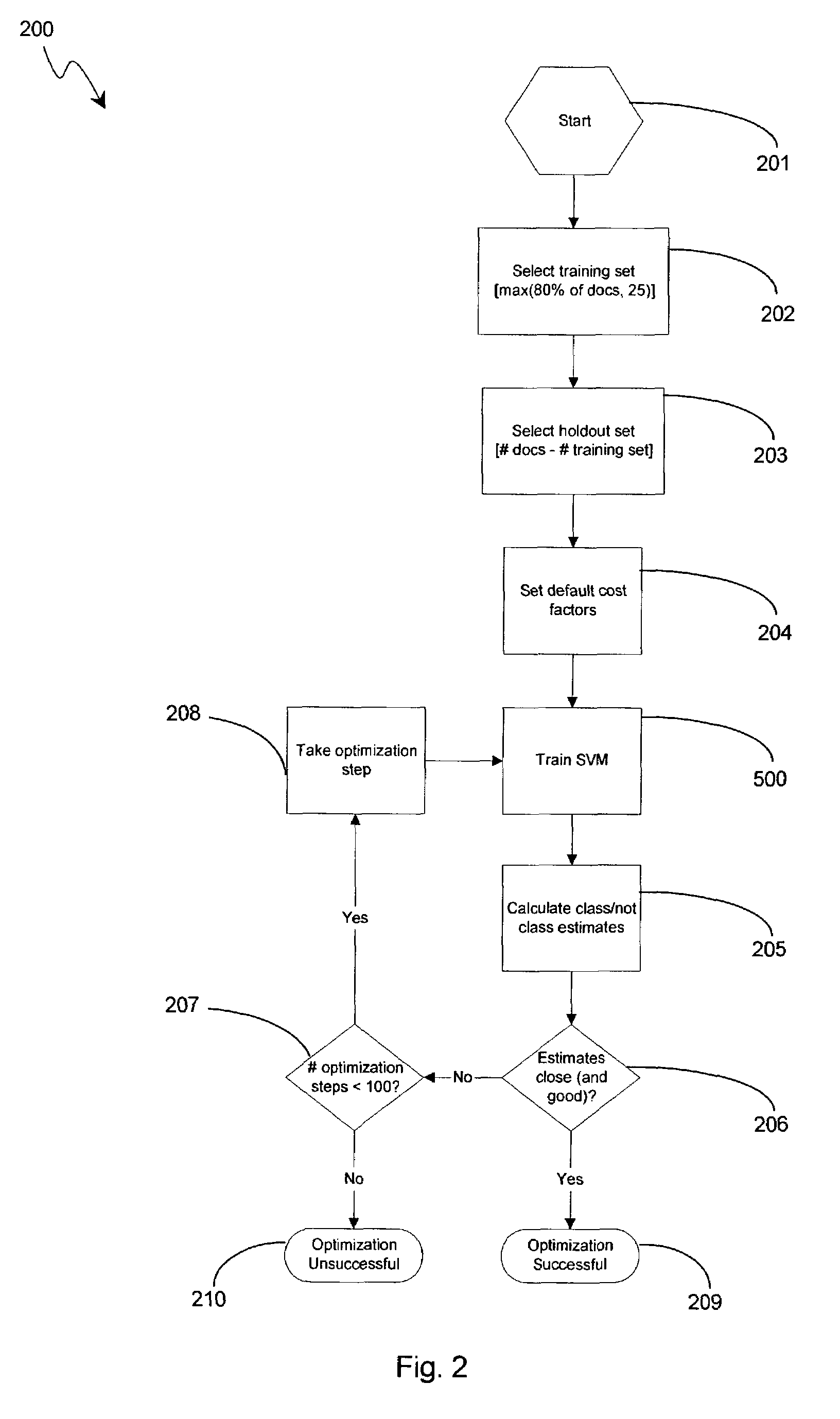Effective multi-class support vector machine classification
a support vector machine and multi-class technology, applied in the field of effective multi-class support vector machine classification, to achieve the effect of computational efficiency, effective handling of multi-class assignment of examples, and effective dealing
- Summary
- Abstract
- Description
- Claims
- Application Information
AI Technical Summary
Benefits of technology
Problems solved by technology
Method used
Image
Examples
Embodiment Construction
[0032]The invention, as described in detail below with reference to the figures, provides a method and system for providing an improved multi-category, or multi-class, classifier using a binary SVM algorithm. Although specific embodiments of the invention are described below, it is understood that the invention is not limited to these specific embodiments, which are provided as examples only.
[0033]The present invention may be implemented using software on a computer system or other processing system. FIG. 1 is a block diagram of an exemplary computer 100 capable of carrying out the functionality of the invention described herein. Each computer 100 operates under control of one or more central processor units (CPUs) 102, such as a “Pentium®” microprocessor and associated integrated circuit chips, available from Intel Corporation of Santa Clara, Calif., USA. A computer can input commands and data from a keyboard and mouse 104 and can view inputs and computer output at a display 106. T...
PUM
 Login to View More
Login to View More Abstract
Description
Claims
Application Information
 Login to View More
Login to View More - R&D
- Intellectual Property
- Life Sciences
- Materials
- Tech Scout
- Unparalleled Data Quality
- Higher Quality Content
- 60% Fewer Hallucinations
Browse by: Latest US Patents, China's latest patents, Technical Efficacy Thesaurus, Application Domain, Technology Topic, Popular Technical Reports.
© 2025 PatSnap. All rights reserved.Legal|Privacy policy|Modern Slavery Act Transparency Statement|Sitemap|About US| Contact US: help@patsnap.com



